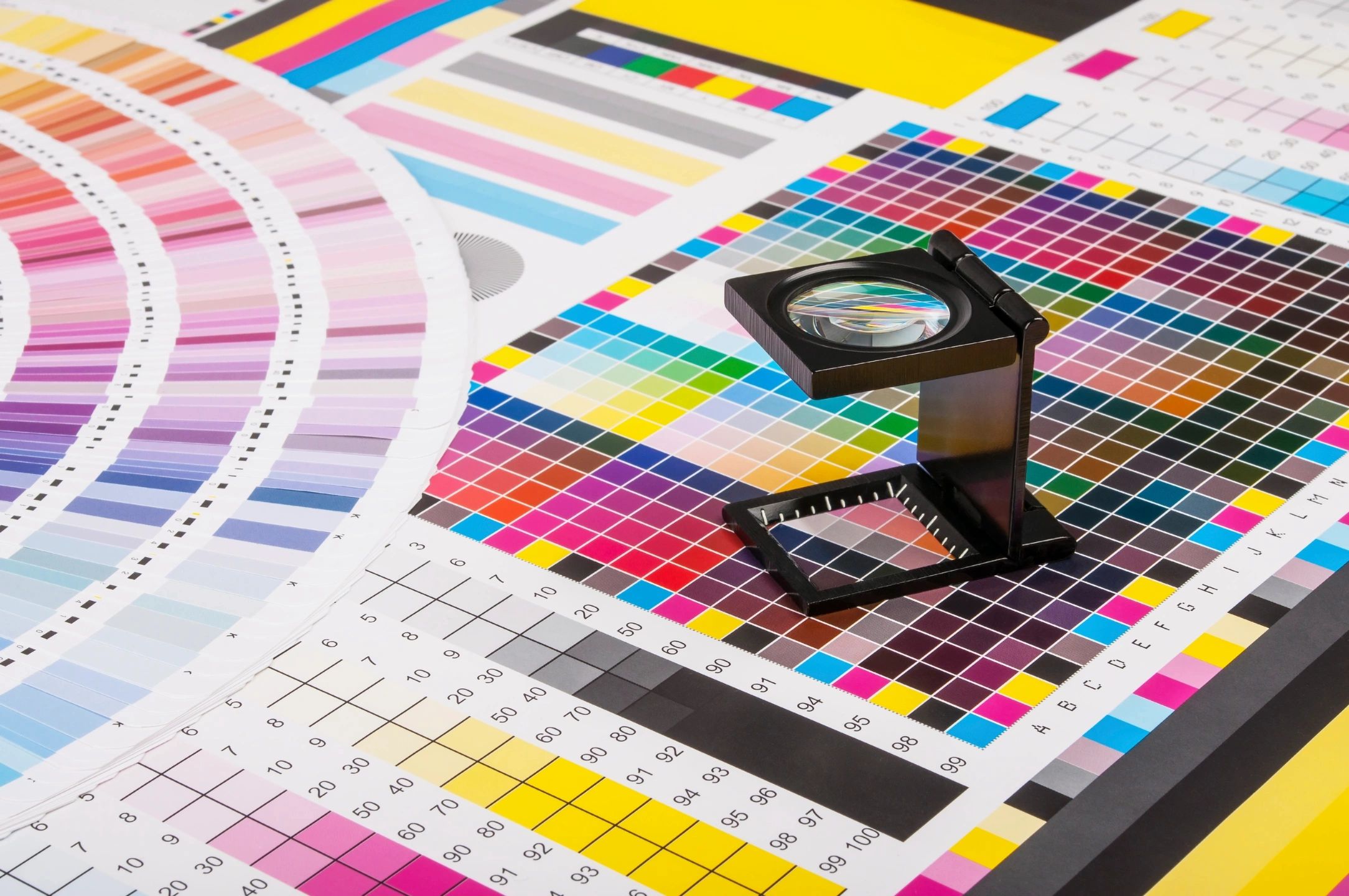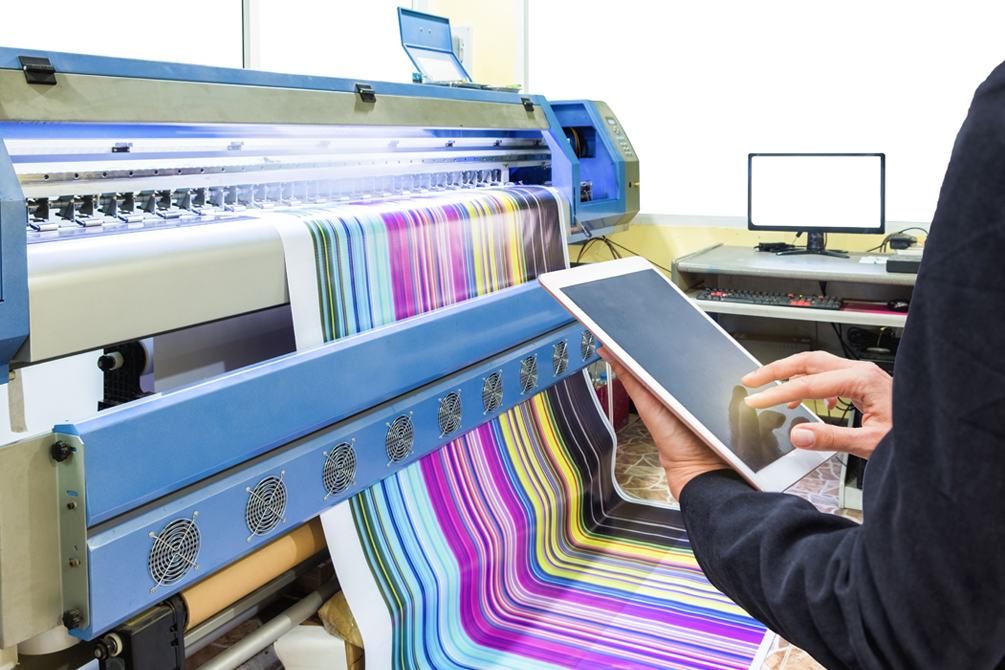How to Find a High-Quality Print Shop Near Me for Art Prints
How to Find a High-Quality Print Shop Near Me for Art Prints
Blog Article
The Ultimate Guide to Making Use Of Printing Solutions for Custom-made Art Prints
Guiding via the globe of custom-made art prints requires a clear understanding of different printing solutions. Artists need to think about factors such as printing techniques and products to attain the preferred end result. Each decision, from art work prep work to shade calibration, plays an essential duty in the end product. As they explore these aspects, musicians can disclose the capacity for their job to attach with audiences in a meaningful means. What steps can they require to ensure their prints stick out?
Comprehending Various Kinds of Printing Solutions
Although lots of people might ignore the intricacies of printing solutions, understanding the different kinds available is vital for any person looking to produce personalized art prints. One of the most common kinds consist of digital printing, offset printing, and display printing. Digital printing is favored for its quick turnaround and capability to produce high-quality photos straight from digital data, making it suitable for small runs. In contrast, offset printing deals premium photo quality and is cost-efficient for larger quantities, making use of plates to move ink onto paper. Display printing, often used for textiles and advertising products, entails pressing ink with a mesh screen, permitting lively colors and structures. Each method has its distinct benefits and limitations, making it vital for musicians and developers to examine their details demands, such as amount, wanted top quality, and budget plan, prior to selecting a printing solution that straightens with their creative vision.
Choosing the Right Products for Your Prints
Selecting the suitable products is necessary for accomplishing high-grade personalized art prints. Comprehending the numerous kinds of paper and the significance of ink top quality can significantly affect the last outcome. Musicians have to consider these variables to guarantee their vision is properly stood for in the published item.
Paper Types Explained
Selecting the ideal paper kind is essential for achieving the wanted aesthetic and resilience in custom-made art prints. Numerous options exist, each offering distinct features. Shiny paper boosts color vibrancy and information, making it excellent for photography prints. Conversely, matte paper gives a softer surface, which is preferable for art work that calls for subtlety and texture. Art paper, often made from cotton or alpha cellulose, supplies historical quality and appropriates for reproducing complex details in paintings (Print Shop Near Me). Furthermore, specialty papers, such as watercolor or canvas, can add distinct visual impacts. Eventually, choosing the suitable paper kind will substantially affect the last presentation, making sure that the art work is both lasting and visually appealing
Ink Top Quality Issues
Ink top quality plays an important function in the general success of custom-made art prints. Premium inks guarantee dynamic shades, sharp information, and durability, which are important for showcasing creative job. When picking printing services, musicians must take into consideration pigment-based inks over dye-based choices, as they supply better discolor resistance and shade security. Additionally, the selection of ink must match the selected paper type, boosting the print's visual effect. Environmental variables, such as humidity and temperature, can also affect ink performance; consequently, artists ought to ask about ink solutions that resist these components. Inevitably, spending in exceptional ink high quality can raise the end product, ensuring that the art print holds to the musician's vision for several years to come.
Checking Out Printing Methods: Digital vs. Typical
While both traditional and digital printing strategies have their unique advantages, the decision on which technique to make use of commonly rests on the particular requirements of the art work. Digital printing succeeds in adaptability and speed, permitting for fast turnaround times and the ability to print as needed. This technique is particularly useful for musicians who need special pieces or small runs, as it gets rid of the requirement for substantial configuration processes.Conversely, traditional printing methods, such as lithography and display printing, frequently create richer colors and appearances, appealing to artists seeking an extra authentic and responsive surface. These approaches can enhance the deepness and top quality of the art work, making them ideal for bigger versions. In addition, typical approaches may use a distinctive visual that electronic printing occasionally battles to replicate. Ultimately, the choice between these techniques must think about aspects like wanted top quality, amount, and artistic intent, leading musicians to one of the most ideal option for their jobs.

Preparing Your Art Work for Printing
Successfully preparing art work for printing requires careful attention to information, regardless of the picked printing strategy. Artists must assure that their documents are produced at the ideal resolution, normally 300 DPI, to keep intensity and quality. The right color setting, typically CMYK for print, is essential to attain the preferred shade precision. Musicians need to also consider the measurements of the art work, making certain to include bleed areas if needed, to stop any type of unwanted white edges after trimming.Additionally, documents formats play a crucial duty; TIFF and PDF are frequently liked for top quality prints. Before submission, it is necessary to review the artwork for any type of flaws or unwanted aspects. By diligently inspecting these aspects, musicians can enhance the chance of their prints aligning with their innovative vision, inevitably bring about an effective printing outcome.
The Value of Color Calibration and Proofing
Shade calibration and proofing are necessary actions in the printing process, as they assure that the last result precisely reflects the artist's vision. Proper shade calibration assurances that the shades displayed on the screen suit those that will certainly be printed. This procedure includes changing the display settings, printer accounts, and inks to attain a consistent shade representation.Additionally, proofing enables musicians to sneak peek their job prior to the last print run. This stage enables them to spot and fix any discrepancies in information, saturation, or shade, consequently decreasing pricey errors. By utilizing hard-copy or digital evidence, artists can make educated decisions about changes required for why not look here excellent results.Incorporating color calibration and proofing right into the printing workflow not just boosts the quality of the end product but likewise promotes a reputable partnership between the artist and the printing service, assuring satisfaction and fidelity to the original artwork.
Choosing the Perfect Size and Style for Your Prints

Advertising and marketing and Selling Your Custom Art Prints
Advertising and marketing and selling custom-made art prints needs a strong brand name identification to stick out in an affordable market. Reliable online promo approaches and the calculated use of social networks platforms can greatly enhance exposure and engagement. By integrating these elements, artists can develop an engaging existence that draws in possible buyers.
Building Your Brand Name Identification
Developing a strong brand name identity is crucial for artists wanting to effectively market and offer their personalized art prints. This identification includes the musician's distinct design, values, and tale, which resonate with potential buyers. Musicians must produce a natural visual presence throughout all systems, consisting of logos, color schemes, and typography that reflect their creative vision. Furthermore, a clear goal statement helps interact the artist's function and passion. Involving narration about the motivation behind each item can foster emotional links with the audience. Uniformity in messaging, whether on social networks or packaging, boosts recognition and trust fund. By very carefully curating their brand name identity, musicians his explanation can differentiate themselves in a competitive market, drawing in faithful customers that appreciate their artistry.
Effective Online Promo Techniques
What techniques can musicians employ to successfully promote their personalized art publishes online? First, creating an expert web site showcasing the artwork is vital. This site must include top notch pictures and in-depth summaries to involve potential buyers. Additionally, artists can utilize e-mail advertising by constructing a customer list to share updates, promos, and brand-new launches. Collaborating with blog owners and influencers in the art community can increase reach and reliability. Offering special items or limited-time discount rates can also create urgency, encouraging purchases. Furthermore, optimizing content for internet search engine through appropriate key phrases will enhance exposure. Keeping a blog site regarding the imaginative procedure can draw in art fanatics, cultivating a much deeper connection with the audience and enhancing the total advertising strategy.
Utilizing Social Media Platforms
Social media platforms work as powerful devices for artists aiming to market and offer their personalized art prints. By leveraging platforms like Instagram, Facebook, and Pinterest, artists can display their work to a vast audience. Involving visuals and tactical hashtags can boost exposure, attracting prospective customers to their profiles. Regularly publishing content, such as behind-the-scenes processes or new styles, helps preserve audience interest and promotes a sense of neighborhood. In addition, artists can make use of targeted marketing to get to details demographics, enhancing the chances of sales. Partnerships with influencers or various other musicians can better enhance direct exposure. Inevitably, a well-curated social media visibility not only promotes custom-made art prints however also builds a faithful consumer base with time.
Frequently Asked Questions

Exactly how Do I Locate Dependable Printing Company?
To find trusted printing provider, one must investigate online testimonials, seek suggestions from peers, compare profiles, demand examples, and analyze customer support responsiveness. This detailed method assurances informed decisions and satisfying results.
What Is the Common Turnaround Time for Custom-made Prints?
The common turnaround time for custom prints differs by service provider, however generally varies from a few days to two weeks. Factors influencing this include order dimension, intricacy, and the particular printing methods utilized.
Can I Get a Reimbursement if I'm Not Pleased With My Prints?
The inquiry of getting a reimbursement for unacceptable prints usually depends upon the certain printing service's plans. Lots of business provide satisfaction warranties, while others might have stringent return problems, stressing the significance of reviewing terms beforehand.
Are There Any Type Of Hidden Expenses Connected With Printing Solutions?
Lots of printing solutions may include covert costs such as arrangement charges, shipping costs, or surcharges for specific products. It's essential for customers to ask about all possible costs before completing their order.
Exactly How Can I Guarantee My Prints Are Eco-friendly?
To assure prints are eco-friendly, one should select eco-friendly inks, recycled paper, and sustainable printing practices. Investigating printing services that focus on sustainability and obtaining accreditations can even more ensure marginal environmental influence in the printing process. Guiding through the world of customized art prints calls for a clear understanding of various printing services. Many people may forget the complexities of printing solutions, recognizing the different kinds offered is crucial for any person looking to develop custom-made art prints. The most usual types consist of digital printing, offset printing, and screen printing. Successfully preparing artwork for printing requires mindful interest to detail, no matter of the chosen printing method. Prints intended at galleries might require standard dimensions to facilitate framing, whereas special layouts might appeal to enthusiasts looking for something distinctive.Lastly, the printing service's capabilities must look at this now be assessed.
Report this page